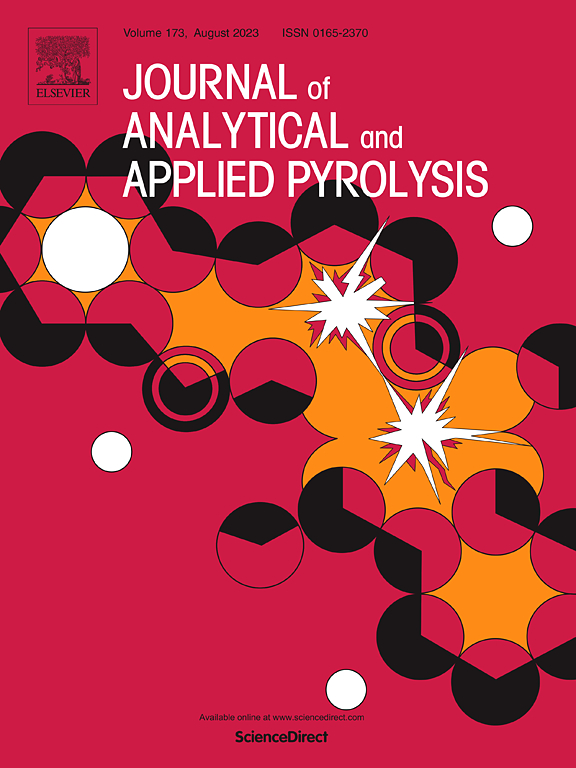通过塑料和三种生物质组分的“汉堡”共热解提高传质效率
IF 5.8
2区 化学
Q1 CHEMISTRY, ANALYTICAL
引用次数: 0
摘要
提高塑料和生物质共热解的目标产物产量依赖于它们中间产物的协同作用。因此,加强这种协同作用的一个关键因素是提高两种原料中间产品的产量。本研究创新性地利用“汉堡式”分层填充策略来改变传质过程,影响关键中间产品的收率。在传统的均质共混模式中,在加热过程中,塑料会先将生物质熔化并包裹起来,以阻断传质过程,从而限制了它们之间的相互作用。然而,“Burger”分层方法减轻了传质限制,并对增加关键中间体和芳烃的相对含量产生了积极影响。例如,与低密度聚乙烯与木质素的均匀共混热解相比,分层热解使木质素热解过程中的关键中间体酚类化合物的相对含量从9.02 %提高到13.49 %。在聚丙烯与半纤维素共热解过程中,分层热解使芳烃的相对含量由8.59 %提高到11.03 %。本研究为优化共热解过程的传质提供了有价值的见解,旨在提高共热解的整体效率。本文章由计算机程序翻译,如有差异,请以英文原文为准。
Enhancing mass transfer efficiency via “Burger” co-pyrolysis of plastics and three biomass components
Enhancing the target product yields from co-pyrolysis of plastic and biomass relies on the synergetic interaction of their intermediate products. Therefore, a key factor in strengthening this synergy is increasing the yield of both feedstocks’ intermediate products. The study innovatively utilizes the “Burger” layered filling strategy to alter the mass transfer process and affect the yield of key intermediate products. In the traditional homogenous blending mode, the plastic will first melt and encapsulate biomass during the heating process to block the mass transfer process, thus limiting their interaction. However, the “Burger” layered method mitigates mass transfer constraints and has a positive impact on increasing the relative content of key intermediates and aromatic hydrocarbons. For instance, compared to the homogeneous blending pyrolysis of low-density polyethylene and lignin, the layered pyrolysis increased the relative content of phenolic compounds, which are key intermediates during lignin pyrolysis, from 9.02 % to 13.49 %. In the co-pyrolysis of polypropylene and hemicellulose, the layered pyrolysis increased the relative content of aromatic hydrocarbons from 8.59 % to 11.03 %. This investigation offers valuable insights into optimizing mass transfer in the co-pyrolysis process, aiming to advancing the overall efficiency of co-pyrolysis.
求助全文
通过发布文献求助,成功后即可免费获取论文全文。
去求助
来源期刊
CiteScore
9.10
自引率
11.70%
发文量
340
审稿时长
44 days
期刊介绍:
The Journal of Analytical and Applied Pyrolysis (JAAP) is devoted to the publication of papers dealing with innovative applications of pyrolysis processes, the characterization of products related to pyrolysis reactions, and investigations of reaction mechanism. To be considered by JAAP, a manuscript should present significant progress in these topics. The novelty must be satisfactorily argued in the cover letter. A manuscript with a cover letter to the editor not addressing the novelty is likely to be rejected without review.

 求助内容:
求助内容: 应助结果提醒方式:
应助结果提醒方式:


